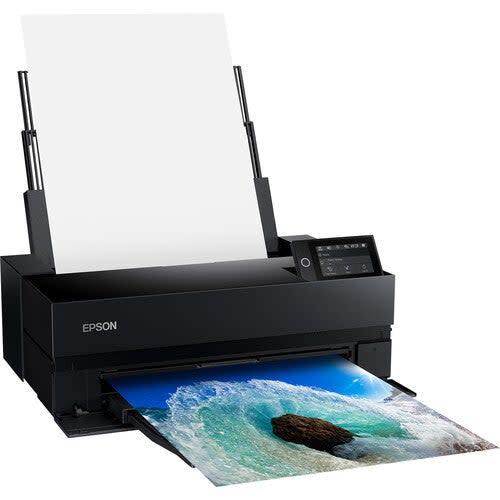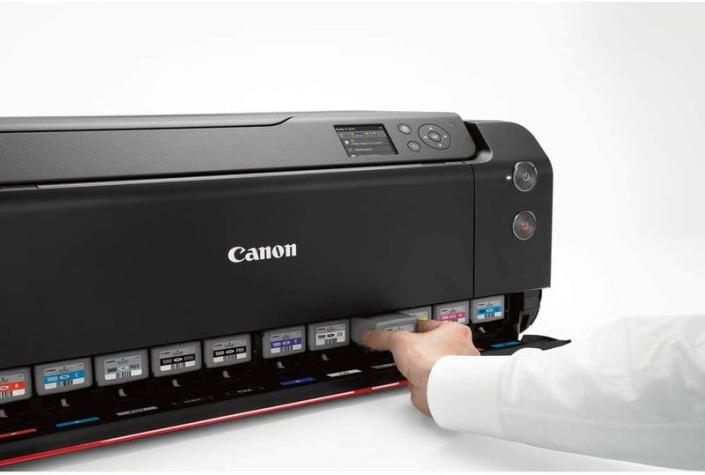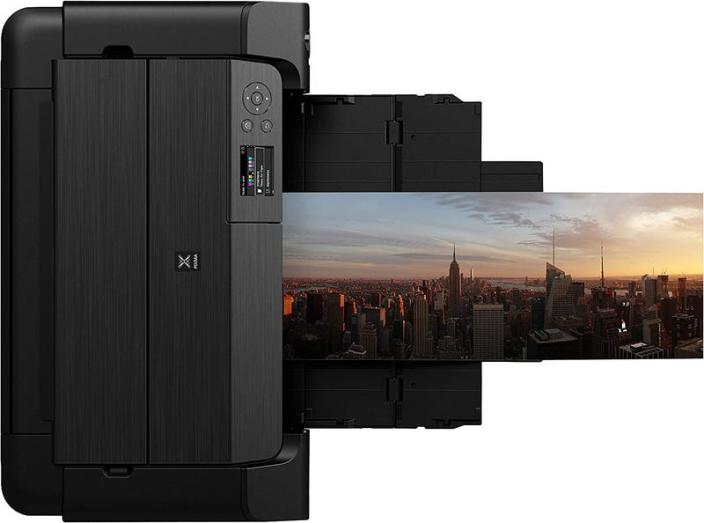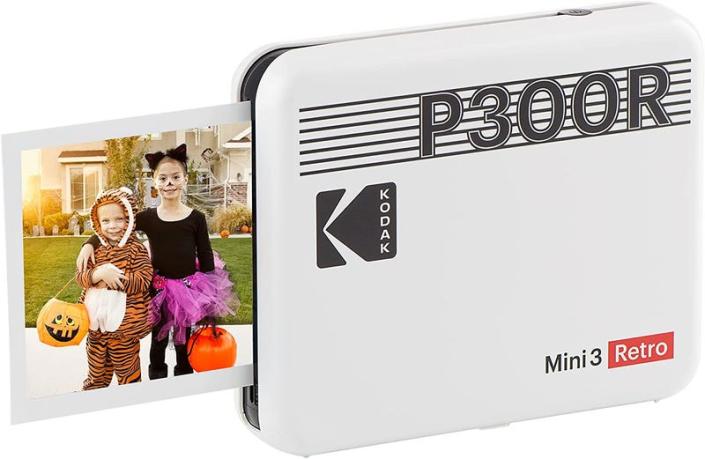
The Best Printers to Make Professional-Looking Photos at Home
Every photographer has to face the question of how to print. Perhaps a client requests one as part their wedding package, or a follower loves an Instagram photo and wants to hang it in his/her home. Maybe you just want to hold the work you’re proud of in your own hands and hang it on your own wall. Whatever the reason, if you can’t afford to work with a pro photo lab, you’ll need another way to make a print. These photo printers can help.
What to Look For In a Photo Printer
Continue reading
The best photo printer for you, like any piece or tech, is the one that suits your needs the most. If you’re a pro photographer that wants to make their own prints, you’re going to need a photo printer that can create very high-quality images, preferably in a variety of sizes. This level of output might not be necessary if you only want to print photos of friends and family to hang on the walls. In general though, there are a few factors you’ll want to consider when shopping for a photo printer, no matter what.
Color quality and reproduction is obviously important regardless of why you’re making prints. Your typical all-in-one home office printer uses a combination of four inks — black, cyan, yellow, and magenta. Pro-level printers use a mix of 10-12 inks for more accurate color reproduction. Images look true to life even at larger print sizes.
If you’re a pro photographer that wants to start adding physical prints to their client packages, you’ll want to avoid cheaper printers with one color and one black and white cartridge each. There are printers that can produce excellent color reproduction at a very reasonable price. So if you’re just looking to print personal photos, you don’t have to sacrifice quality for cost.
Your photo printer’s physical footprint is also important. It should fit comfortably on your desk, or in your designated workspace. What size paper does the printer use? Is it possible to take your printer with you if you are in need of something portable? When searching for a home printer, think about your workspace.
Cost is also important. Professional grade appliances will cost more upfront for both the printer and ink. Pro machines usually go through ink faster since they use more for each print, and they’re probably turning out photos at a higher volume than a typical home printer. Do the math to determine if the long-term cost is worth it. If it isn’t, go with a less expensive product.
Another cost that can add up is photo paper. If you want the highest quality prints, you’ll have to pair your pro photo printer and ink with high-quality, archival photo paper. Canon and Epson both make their own. See a more detailed rundown here of high-quality photo paper.
Print speed can make a big difference in the amount of work a professional photographer can produce, so it’s an important consideration if you’re working at that level. Even though the best-quality photo printers are capable of producing a quality print in minutes, they do come at a higher price.
More expensive photo printers will also have extra features, like larger touchscreens, wifi connectivity for easier file transfer, and an anti-clog function so the ink doesn’t dry up after sitting for a while. These criteria will help you choose the right printer for you.
Methodology
As much as I’d love to (because I have a few images I’d love to print large-scale), I can’t personally test every photo printer on the market. I can however search the internet for customer reviews and expert opinions as well as real-world testing that give insight into how these appliances perform. So that’s exactly what I did.
Additionally, I used my knowledge and experience as a photographer in order to determine what professional photographers would need from a print. Many professionals working at the top of the industry partner up with professional print labs to get physical copies of their work. For large prints of his favorite images, Sean Tucker partnered with Genesis Imaging in the UK. Ted Forbes and Hidden Light studios in Arizona made platinum palladium prints. And Peter McKinnon, YouTube’s top photography channel, opted to make physical prints of his work instead of hopping on the NFT trend. If you have the means to make physical prints, I recommend speaking to local labs. A professional home photo printer is an excellent option for those who are just starting or are more cautious about their budget.
Even if you don’t take photos full time, you’ll still find an option on this list to make prints (and maybe leaflets or documents) with. We’ll start with the pro level and work from there.
The Best Home Printers
These machines are the most expensive: dedicated professional-level photo printers. These machines are designed to print high-quality, gallery-worthy photos and sometimes banners. They don’t have the option to print documents or scan papers — they just do amazing photo prints. As such, they’re probably only a worthwhile investment for a professional who knows they’ll make money from using them long term, or a serious enthusiast with extra cash to drop.

Pros:
Cons:
The Epson SureColorP900 is a professional-grade printer. It uses ten different inks and produces high-quality prints that are durable. With the optional roll adapter, you can make banners upto 17 inches wide and 11ft long. Not only does it make these stunning images at home, this printer can turn them out quickly — a 17 X 22-inch fine art print is done in under three minutes. The SureColor 900 is also very small in size considering its capabilities. An LCD screen allows you to adjust the settings before printing.
This printer uses high-capacity cartridges rather than bottled inks. It is not like other higher-end printers. Each color cartridge must be purchased separately (though you might be capable of getting 2-3 at a given time in combo packs), so it adds to the cost. You can buy combo packs with bottled ink to use with eco-tank printers. There are some third-party options available as well. This allows you to save money even though the upfront cost is higher. Though expensive, the Epson is fairly efficient with ink, so you should be able to go for a while between replacements if you’re not cranking out a super high volume of prints.
Overall, this printer is a good option for pro photographers who shoot events like weddings, family sessions, or fine art portraits that don’t always want to outsource photo printing services to a professional lab.

Pros:
-
High-quality prints that last
-
Wi-fi makes it easier to transfer files
-
Anti-clog function allows the printer to be left idle for a while, but still be available when it is needed.
Cons:
-
High price tag
-
Quickly goes through ink
Canon’s imagePROGRAF PRO-1000 is another respectable pro-grade option for home prints. Its 12-ink mix makes great-looking photos that’ll impress those wedding or engagement clients (or look good on a gallery wall). Keep in mind that the professional ink it uses works best when paired with the right photo paper, so you’ll want to buy that to get the most out of your prints. The PRO-1000 also goes through ink pretty quickly, which can get expensive, so be sure it’s worth the investment before you buy.
This printer can be used with wi-fi devices so that you can transfer photos from any connected device such as a smartphone or late-model DSLR. There’s also a built in anti-clog function, an important feature if your photo printer isn’t always in use.
It is similar to the Epson but has a higher up-front price, but it could be worth it for professional photographers. If you’re more of an enthusiast looking for the occasional print, I’d recommend one of the cheaper options on this list.

Pros:
-
Good price for the print quality
-
Prints very quickly
-
Eight-ink mix produces deep, detailed colors
Cons:
The PIXMA Pro 200 printer is half the price of the Canon PROGRAF printer. It offers a good balance between quality and price for new photographers who are just starting out or looking to improve their print skills. It has an eight-ink combo that creates images with a higher level of detail and depth than a standard home printer. It can also print up to 13 inches (size a3+ paper). That’s a little smaller than pro grade, but still not bad for most situations.
Canon claims that the PIXMA Pro 200 can produce A3+ prints in just 90 seconds. You can also print eye-catching panorama photos or bordered 8×10 prints in under a minute. It is a great option if you are a serious photographer and need to print your work on a limited budget.

Pros:
Cons:
Canon’s TS6420a is an affordable everyday printer that produces great results for its price point. For the person who doesn’t want (or need) to shell out a grand but still wants nice prints of their vacation or family to frame, this printer is worth a look. The TS6420 is a great entry point for photographers in their early years.
Since it’s designed as more of an all-around household printer, the TS6420 is an all-in-one with a built in scanner. You can scan old film prints and share them online. Or, you can set it up in your home to print documents and occasional photos. It only uses five inks as opposed to the pro-grade 10 or 12, but that’s still slightly better than your run-of-the-mill, two-cartridge office machine.

Pros:
-
Produces fun, small prints quickly
-
Highly portable
-
Doesn’t need replacement ink
Cons:
-
Prints are small and not ideal for professional use.
-
No WiFi connectivity; only Bluetooth
Kodak’s Mini 3 Retro pocket printer is relatively affordable and makes it easy to produce small prints on the go. It uses Zero Ink (Zink) paper that burns the image onto the print instead of ink or instant film, so there’s no need to worry about replacing cartridges.
The prints are small and high quality for a pocket printer. The Kodak wireless connectivity is not available on cheaper pocket printers. However, it can be used over Bluetooth and not WiFi. The app allows you to add small customizations to your print, such as borders or filters. This is mostly a for-fun product, unless you’re packaging mini-photos with a product like a wedding photo box. 83% of Amazon users rate this pocket printer 4-5 stars, and reviewers note that you’ll get the most of of this printer and avoid wasting Zink sheets if you read the directions.
The Canon PIXMA TR150 is a compact, lightweight printer that produces larger prints and more capabilities. It can also fit into a backpack and costs about $100 more.
That’s a wrap on this list of the best photo printers. No matter what level of photography experience you have, I hope this list helped you find the right printer. I also hope I can soon get my hands a high-quality printer to print black and white portraits. As always, we provide the information here to let you make a well-informed decision — what you choose is ultimately up to you.
Gizmodo has more
Subscribe to Gizmodo’s Newsletter. Facebook has the most recent news. Twitter Instagram.
Click here for the complete article


